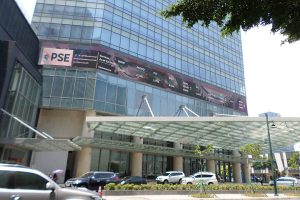Rescuing a weaving tradition from the brink of extinction

A MODERN woman is bringing back the ancient art of weaving to her ancestors’ land in Nueva Vizcaya.
We first met Jeannie Laccay at a standup comedy open mic by Filipino comedians, the KoolPals, where she cracked jokes about her past life as a flight attendant. If one digs even deeper into her past, one finds out that she’s half-Isinay (an indigenous people who reside in Nueva Vizcaya), and that those people have lost their weaving tradition.
According to Ms. Laccay, the last woven piece from the Isinay was produced in the 1970s. The last woman who wove in the community did not pass on her knowledge to her children. “Already dead,” Ms. Laccay said when asked whether the last weaver was still alive. Her children were still alive to tell Ms. Laccay that their mother did not pass on her knowledge due to a lack of interest in the next generation. All of the other weavers had died, and many Isinays migrated to the lowlands or to other countries.
Ms. Laccay had no idea about the heritage her people had lost. “What got me there is just because I wanted something for my baby and me,” she said during an interview on the sidelines of the preview of the Likhang Habi Fair last month. (See story on this page.)
Ms. Laccay had hopped on to the baby-wearing trend around 2018, but found that some of the slings available on the market were too stiff. Frustrated with her options, she taught herself how to weave through YouTube, of all places. She then contacted the Philippine Textile Research Institute (PTRI) to learn more about the craft. Asked if it was easy for small businesses like her to contact the institution for help, she said that she had shot them an e-mail first, and made inquiries several times. “Makulit ako eh (I’m very persistent).”
She then began weaving in her home around 2018. When she began, her mother (who was from Ilocos) said that the Isinay had once been known for their weaving. She founded her baby-wearing business, Aruga Handwovens, and has since expanded into other items from bags to neckties, and shoes. On that note, while “aruga” means “care” in Tagalog, she found out that the syllable “aru” meant “love” in Isinay.
The pandemic lockdowns in 2020 saw her and her family returning to Nueva Vizcaya, where she taught local women how to weave. She learned later, through a weaving workshop in Mountain Province, the more ancient art of ikat weaving. This is done on backstrap looms, and the yarns are dyed before weaving. Her method uses the more modern upright loom, and her yarns are already dyed.
The question of adaptation raises the question of authenticity. “How is it authentic? Because it’s made by an Isinay weaver,” she said. “It’s not because of the colors — no, it’s not that. What makes it authentic is the weaver who made it.”
One imagines the irony of having modern technology save a dying art form when it seems that modernity had been the culprit in its death in the first place.
“That’s the challenge that we’re facing right now. I have to bring back what the weavers used to do before,” she said in a mixture of English and Tagalog. Still, she said about the advantages of learning the craft online: “Everybody can learn, if you really want to.”
The loss of weaving within the Isinays will not be the first, or the last time, that an ancient art has been lost to the modern world. Rescuing cultural heritage isn’t a part of everybody’s normal workday. What then can normal citizens do to make sure it won’t happen again? “Awareness that there’s money in weaving. It’s not a luxury item or something that only rich people want,” she noted.
“It’s cloth. You can do anything with it.”
We noted that she wore a fashion-forward halter top — made with traditional weaving techniques. “Kung gawa kayo ng gawa, tapos makilala kayong Isinay (If you keep making, and it becomes known as Isinay), that’s when the demand comes in,” she said.
While we met Ms. Laccay while she was cracking jokes, her story seems to be a setup for an epic: modern girl goes back to her roots and pulls an ancient craft back from the very edge of oblivion. It seems to be a heavy task.
“I think it’s in my blood to be in this craft,” she said. “Maybe — I don’t know my purpose yet in this world, but I think it’s one of my purposes, especially for the Isinays,” she said.
“I’m half-Isinay and Ilocano. I’m more in touch with my Isinay roots. Maybe that’s my purpose: to bring back one of the traditions of the Isinay.” — Joseph L. Garcia




